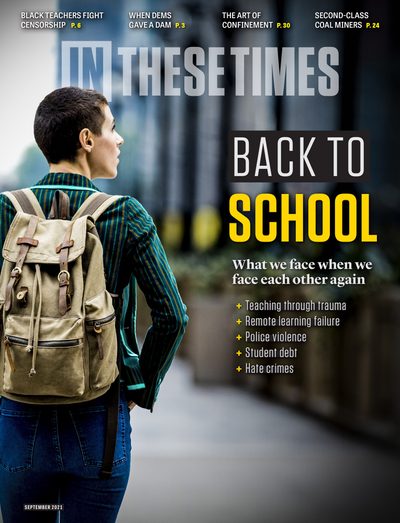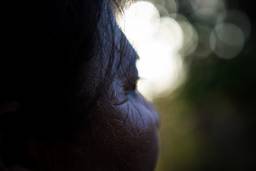Pedagogy of the Apocalypse
In a year filled with trauma, a university professor learns how to support her students.
Tatiana McInnis

Teaching is a forward-looking practice. Each semester I outline what lessons my students can take from our classes, in light of their dreams and career plans. As it turns out, it’s impossible to educate for a future you are not confident exists.
As Covid-19 escalated in 2020, I began teaching in the Comparative Race and Ethnic Studies Department at Texas Christian University. My students were in shambles. At least 16 of my 73 students got Covid-19; their peers held an anti-mask rally.
As students lost parents and sent apologetic email for missing class, I realized the university was reaffirming the wrong priorities. Some students shared that they felt professors were increasing workloads — which, one Black 19-year-old laughed sardonically, was an affront, given that “we are in the apocalypse.” He was referring to the endless loop of state-sanctioned murder, mass illness, the “light-work” effort to take the Capitol and overthrow the government and the fact that our planet is losing its ability to sustain our lives. I laughed with him to keep from sobbing.
For my 62 Black students, the events of the 2020 – 21 academic year manifested brutally. They contended with a pandemic that disproportionately harmed their communities, shared videos of police killing Black people and protests against police brutality that incited more brutality, and received empty statements from their school about their worth with “no action to change this campus” (as explained by one leader in the Black Student Association).
I teach classes about how race shapes the quality and length of our lives, and I often have the privilege of having mostly non-white students. These classes are challenging and eye-opening, and there is no content warning I can offer that will make the material easier for them. What I could do, this past year, was center my students’ exhaustion and despair. Doing so derailed the objectives of each of my classes, but we still learned with and from each other.
On August 26, 2020, I opened my Black studies course with a discussion of Jacob Blake to hold space for students to reflect. A young Black woman hung back after our Zoom discussion to thank me because I was “the only professor who is letting us talk about what is happening.” I explained that, as a Black woman faculty member, I couldn’t teach with blinders while the world burns.
Each class started with, “How are you? No, really.” The Zoom chats filled with “tired,” “exhausted” and “overwhelmed.” One student unmuted to say, “It’s just a lot.” And because it was a lot, I did not require students to turn on their cameras and offered a B-minus to students who did the work without Zooming; they still showed up. We also took restorative breaks beyond the days designated by the school.
In two classes, I invited students to lead class meetings. My assignment sheet noted that the few things students could control in this difficult year was “how you show up for the people you are in immediate contact with within this class.” Participation was robust and affirming. In those classes, reactions lit up the Zooms, even without cameras. Apparently, students are more interested in uplifting each other than responding to a professor; I am fine with that.
During an exhausted lull in one spring course, a vibrant student asked, “What are folks watching?” Half the class, all Black students, stayed to chat. Everyone was watching Grown-ish; some were watching Pose; one student was appalled so few had seen Love & Basketball. The student who had posed the question apologized for the distraction. I wanted to reply, “Jesus, I’m just glad you’re alive.”
I had about as much heart to assign papers as my students had heart to write them. I was rewarded with podcasts, artwork, syllabus revisions, poetry and interviews by students who asked only for the space to think, submit work and remain whole. I learned so much about myself as an educator and received a welcome reminder that I am in it for the students.
This fall semester presents new challenges. I must explain and defend the field I teach, critical race theory. At the same time, we are at grave risk of being lulled into a collective amnesia as we “get back to normal.” The ghosts of the past 18 months haunt the mundane. Our students still stand to inherit an uncertain, traumatic and (potentially) apocalyptic world.
As I meet this new class of students — in person — I’ll continue to reflect on what a trauma-centered pedagogy looks like during unprecedented times. Last year, my students needed flexibility and reminders of their value beyond stated course objectives. I will take that with me, come what may.
Tatiana McInnis, Ph.D., is an educator and writer with a background in critical race theory, ethnic studies and all things feminist killjoy.





